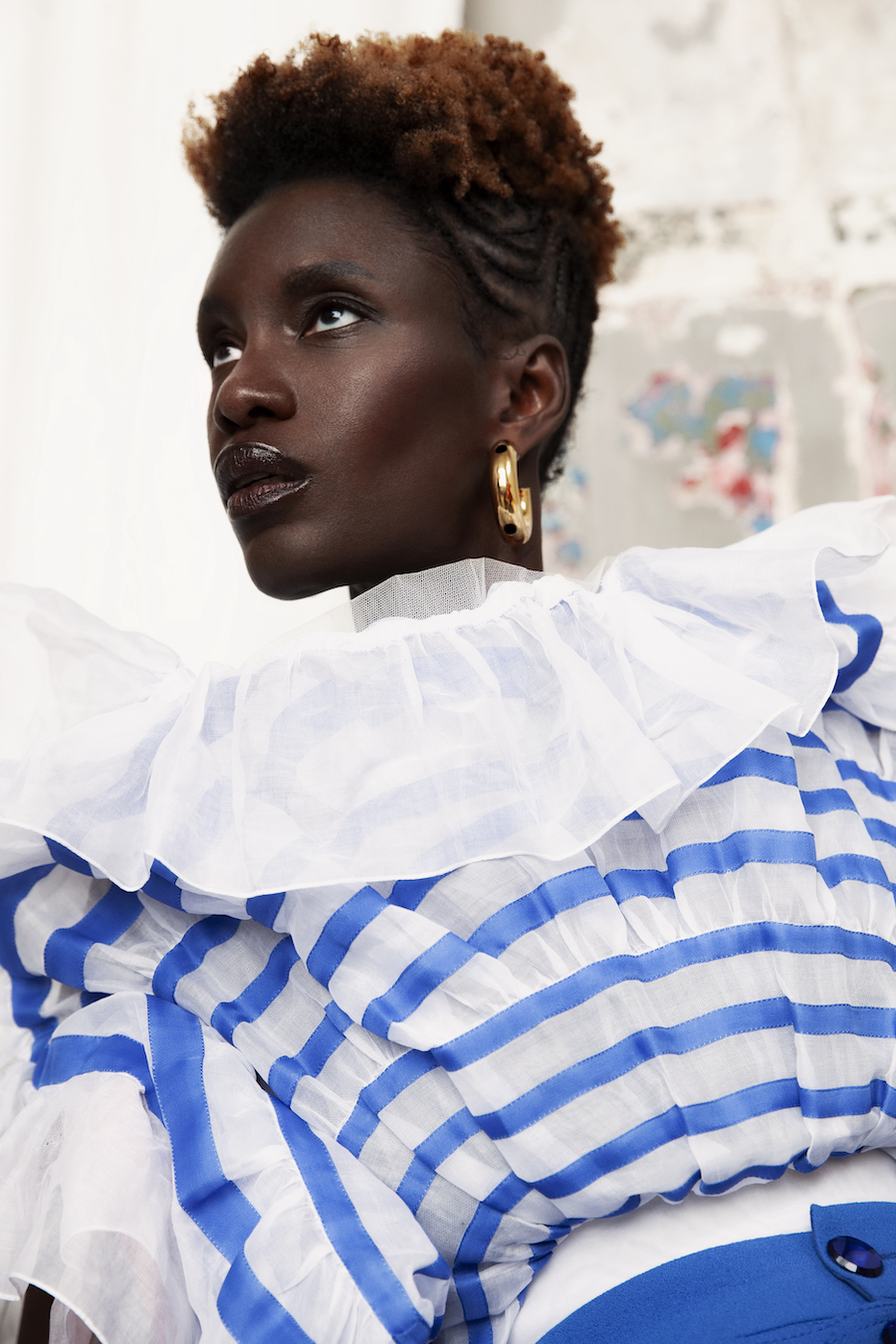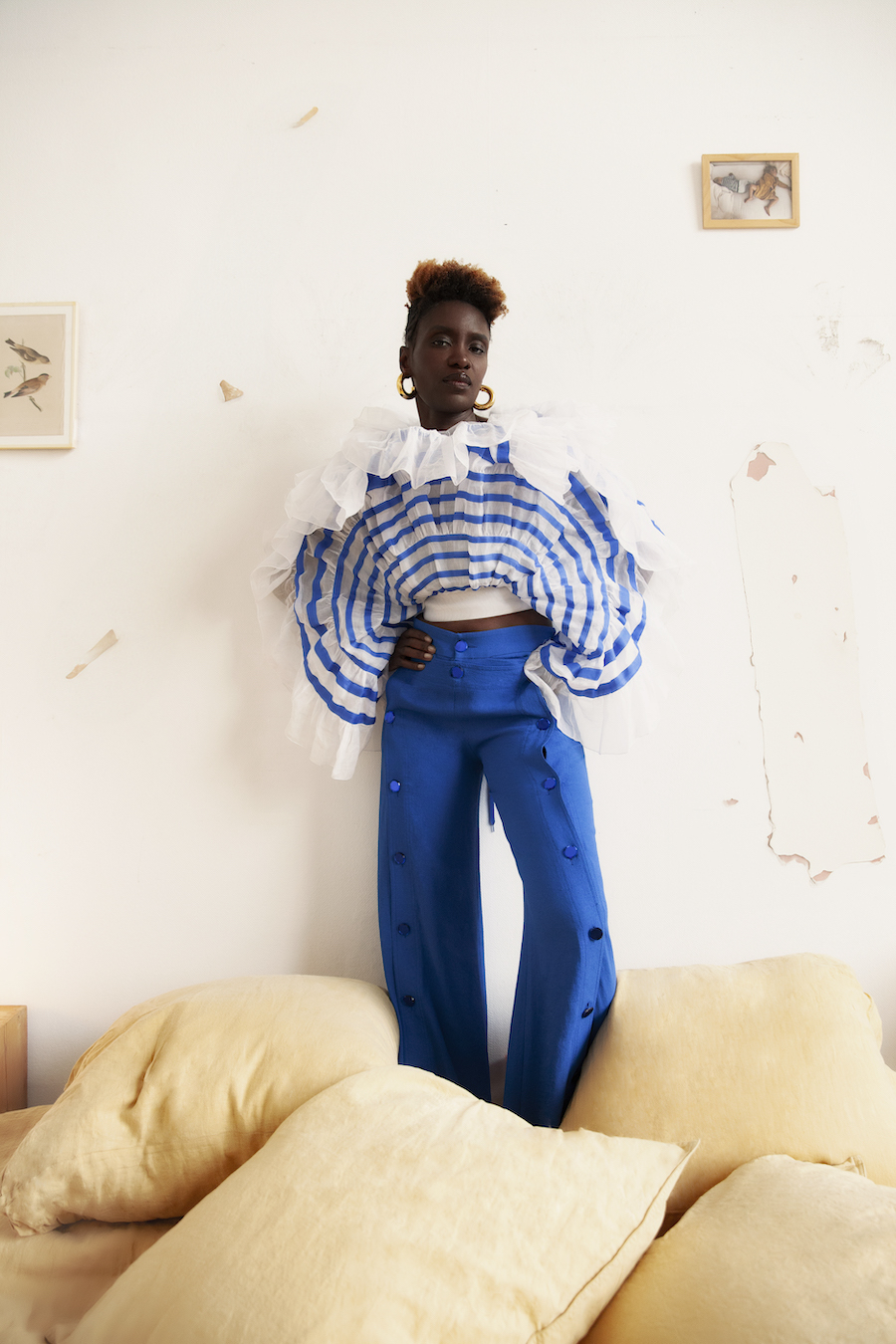Re-shaping narratives in her own distinct way.
Meet Rokhaya Diallo, the trailblazing activist who always has something up her sleeve. From writing, to filmmaking, to fashion, Diallo is re-shaping narratives in her own distinct way. Fighting for racial, gender, and religious equality she’s become the voice of a generation – and we’re all ears. Her latest film “One Struggle” with David Rybojad explores the solidarity between the Jewish and Black communities in the United States through the twentieth century. It’s provocative, it’s beautiful, and it’s something we all need to watch. Luckily for us, we got the chance to catch up with Diallo to discuss all things from this film to fashion as a medium of activism.
How are you today?
I’m good today, I got a lot of rest so I’m good.
Good! Could you tell us about your journey into activism?
There were several events that led me to be involved in activism. I’ve always been sensitive to gender equality, even as a teenager. But racism really came into my face being a young black French Muslim woman. I was constantly questioned where I was from because supposedly, despite being born and raised in France, there is this purity culture about not being truly French. This led me to realise that there was no fair representation of minorities in cinema.
One event really shocked me in 2005, it was the death of two teenagers chased by the police for no reason. The way it was covered by media did not acknowledge the fact that they were teenagers and that had really done nothing wrong. The death of Zyed Benna and Bouna Traoré made me realise that something was needed to reshape how France was seeing its non-white citizens.
Let’s jump right into your documentary work. Your docs often shed light on misrepresented narratives, and we can imagine that naturally comes with obstacles haha. What challenges have you faced while bringing these stories to light?
I would say convincing people that the topics I’m working with DO need funding. I work with very small budgets which, you know, is good for creativity but is sometimes very challenging production-wise haha. You must make your documentary meet the standards of others that do have funding, but with very little yourself.
How do you ensure authenticity in your docs?
I don’t really think about how to be authentic, I just genuinely put what I wish to see on screen together and try to find figures, people, characters in the documentary who are authentic themselves. So, it’s not a quest, I’m not seeking authenticity. For me, authenticity is not betraying the people you interview and not betraying the people that you portray.
Can you walk us through your process of creating a documentary?
Basically, I have some ideas, okay many actually, like a file full of ideas for documentaries. And sometimes I happen to meet a producer or TV person who is interested in what I have to say. I pitch them one of the ideas I have in mind while considering what will connect most with their audience. And from the moment I pitch to them. If it’s a green light, I start to write and reach out to the people who will fit with the documentary.
For me, it’s important to create teams that in some ways reflect the documentary. For example, I had a documentary about the evolution of women’s body trends. For that I wanted to work with an exclusively female team. It was a very small budget documentary and small team – we were only two actually – which really allowed us to be close to the characters. This became necessary because some of them really needed this intimacy to be who they were and not feel observed by the male gaze.

Top JEAN PAUL GAULTIER, earrings D’HEYGERE

Top JEAN PAUL GAULTIER, trousers JEAN PAUL GAULTIER, shoes SANKAUNZ, earrings D’HEYGERE
In what way do you leverage the power of imagery and cinematography to evoke an emotional response?
That’s a good one. I think I really try to use what’s already there, like focusing on the characters, trying to get the most of their emotion. I use music for example but not too much like I don’t want to add music to create drama when it’s not necessary. If someone is emotional or cries I try to put something very discreet that will not amplify what we can feel or tell from what we already see.
You recently came out with a new film, “One Struggle,” can you share more about this?
So it’s a documentary I made with a friend of mine David Rybojad. It’s actually the first time I co-directed a documentary. It’s about the solidarity between Black and Jewish communities in the U.S. from 1909-1968. We made it before the start of the genocide in Palestine, so the context was quite different from the one we are in today – we actually thought of it 9 years ago in 2015. Our goal was to display a powerful example of solidarity from history to inspire people today. I didn’t know how meaningful and how timely the documentary would be.
The inspiration came from Abraham Joshua Heschel who was a rabbi and a very good friend of Reverend Martin Luther King Jr. You know, Martin Luther King Jr. being a black Pastor and Heschel being a Rabbi from Eastern Europe, them coming together during the civil rights movement was a very inspiring story. In fact, there is this famous picture of them at the march of Selma. It’s also interesting how before this, in the 1930s, the Black press in the U.S. was at the forefront condemning Nazism whereas most of the white press in the U.S. just ignored what was happening in Europe.
The goal was to display an image of solidarity in action, in motion, during challenging times.
That is so interesting and a story that, while may be known within communities specifically in the United States, is not written in the history textbooks. It is so important to tell these stories to, like you said, inspire people in the present. Shifting to a new medium, let’s talk fashion. How does fashion integrate as a form of activism in your work?
That’s actually a very funny question because when I was first appearing on TV debates, I was often both the only women and always the only person of colour. I was also the youngest at that time. It was challenging to exist. In the beginning, I wasn’t sure how to appear publicly because I was so different. At first, I thought maybe I should try to fit in, go with grey suits but very quickly I realised even if I tried, I didn’t look like anyone. So I decided to use my appearance and do whatever I wanted with it. I am a dark-skinned Black woman with afro hair, of course I was different.
Fashion has always been activism. as a young journalist I connected with young designers and designers of African descent, wearing what they created on political TV debates. Wearing these clothes was to me a form of activism because it was a statement, saying “I don’t look like you and I come from a different perspective. As a woman I don’t have to choose between an intellectual and being a fashionista.”
In what ways do you feel fashion can serve as a platform for a social and political message?
I think there are two elements to it. Choosing the way you dress yourself and choosing ethical ways of producing clothes. If you are visible, you can use fashion to make political statements. And I think at the same time, fashion is political because who gets to be visible, who gets to create, and who gets to attend fashion week is the translation of power dynamics. Because of this, I think fashion brands have the ability to express political messages but only when the brand makes this commitment in its core.
Dress GIAMBATTISTA VALLI, earrings LARUICCI
What are some of your fav emerging brands and why?
He’s not emerging but is someone that I’ve been close to for a long time, XULY.bet. Lamine Kouyate is a designer who started in the 90s and I love what he does. I also love what Laruicci does in terms of accessories, I love earrings, purses, and the rock tones in what they do. And of course my nickname is Rok (Short for Rokhaya)!
Do you have any advice for young people that want to get into the field of activism?
I would say don’t shut up. Whatever you feel is not fair, say it. Wherever you can say it. Now we have social media and you can produce content easily. Don’t hesitate to say what you have on your mind, express yourself, don’t shut up and connect with people because we are stronger together. At the same time protect yourself, think about your sanity, about your mental health. Make sure that you don’t put the cause before yourself.
Words by Ella Paritsky
Agent / creative direction / powered by Réda Ait (thempresents)
Photography by Mical Valusek
Styling by Pierre de Monès
Make up by Daurianne
Hair by Chan B
Movement direction by Malik Le Nost
Styling assistance by Arnaud Lashartouni
Special thanks to KCD, Ritual Projects, JPG, Acne Studios, Emmanuel Kahn, Giambattista Valli, Mamatou, Lucie Baumont, and Helene Muron
Notifications